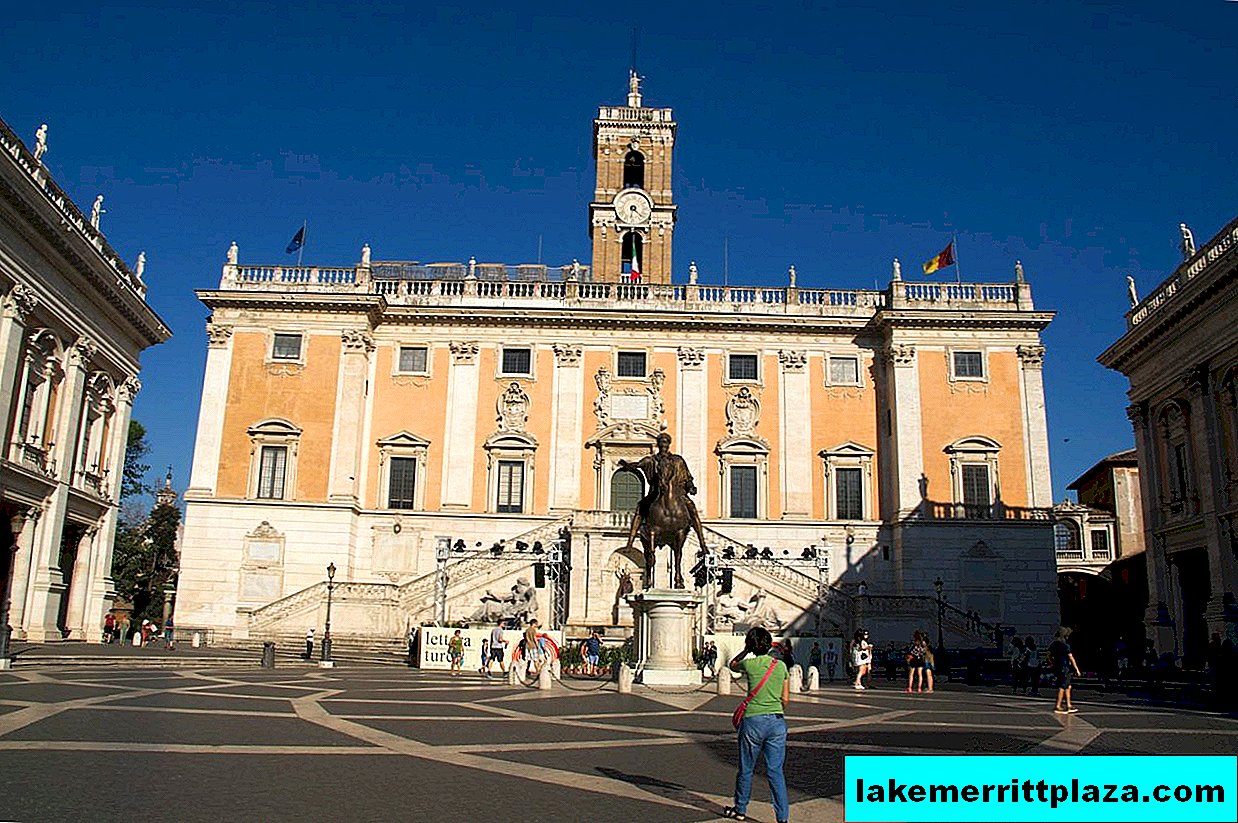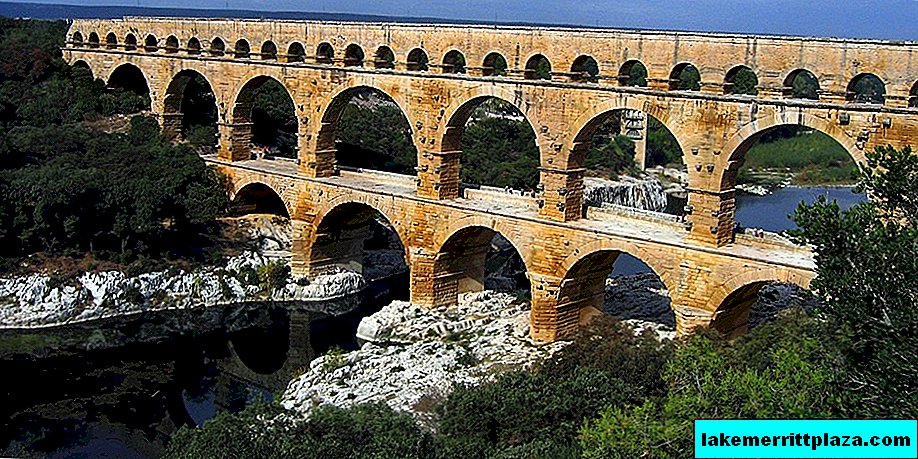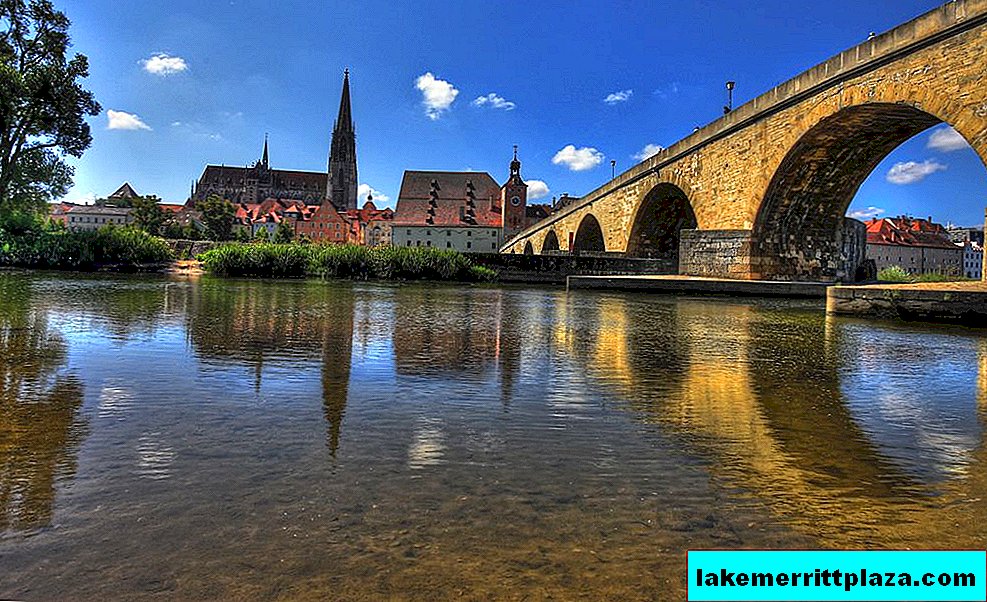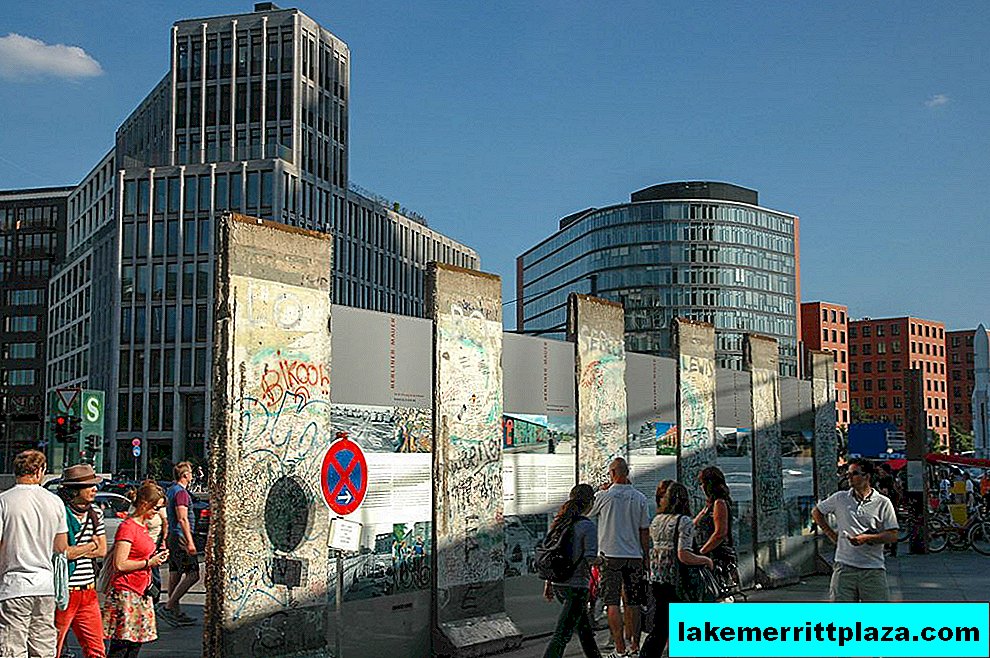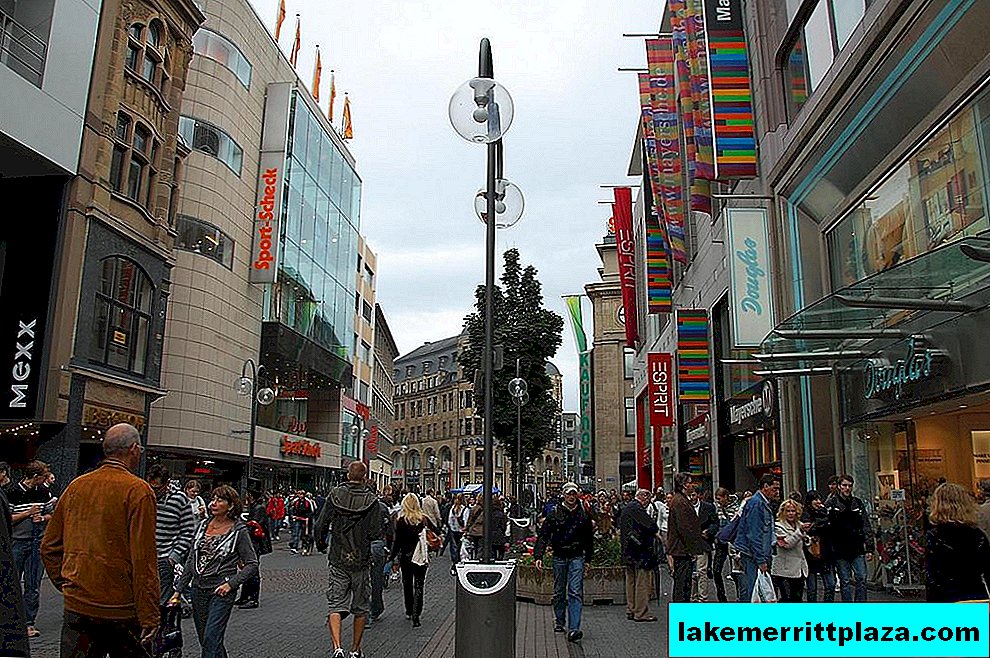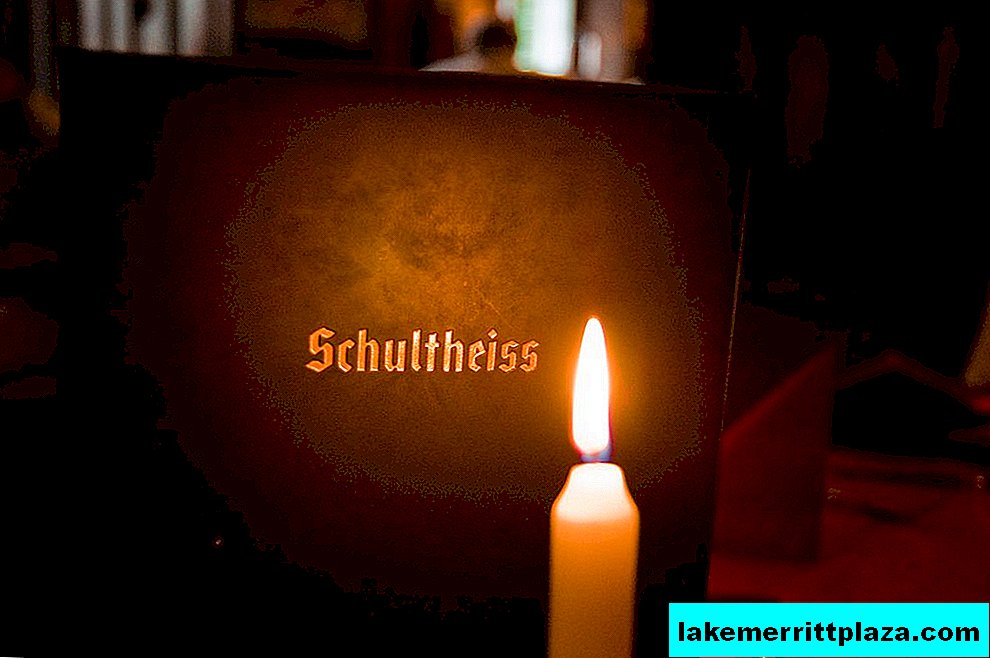The Palazzo Medici Riccardi, formerly the ancestral castle of the Medici family, is the first Renaissance building to be built in Florence. This attraction is located near the Duomo Square. The palace became an architectural model for such buildings in the future, turning into a classic. And the history of one of the most famous buildings in Florence has become an integral part of the history of the city.
History of creation
The look and style of the palazzo was invented by the architect Michelozzo specifically for the Medici family. Initially, the creation of the project was proposed by Filippo Brunelleschi (Filippo Brunelleschi). However, the construction he had invented seemed to the old banker too elaborate and elegant, and he refused his services. Cosimo the Elder believed that too rich a building would cause unnecessary envy. According to historical evidence, Brunelleschi was offended by the refusal so much that he broke the palace model proposed to the duke.
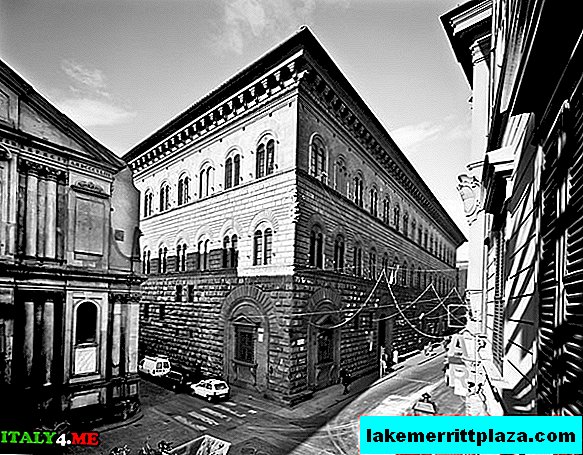
The image of the palace, proposed by Michelozzi di Bartolomeo, was on the contrary so simple that the Medici unconditionally accepted it. So at the intersection of the busiest streets of that time, the construction of the first Renaissance mansion began, which lasted for 20 years, starting in 1444. Later, architects who built houses for bankers tried in no way to exceed the Cosimo house so that the owner would not be accused of arrogance.
Courtyard
A strict structure in the form of a regular quadrangle hides inside itself a central courtyard of the correct form, surrounded by arcades. During his reign, Lorenzo, entering through the archway, could see at the same time two "David" placed above the atrium. One was created by Donatello, and the second by Verrocio. The yard is simply charming. When you get there, you feel an unusual lightness, compared with the pressing power of the facade. Later, such elements of architecture will become mandatory for every house of the aristocrat.

The courtyard is also called the "Courtyard of Mikelozzo" or "Courtyard with columns." The architectural solution of the courtyard is very harmonious and creates the effect of symmetry. The first level of the building is made in the form of a covered arched gallery with columns decorated with a frieze with medallions, scenes from mythology made by Bertoldo di Giovani, the Medici arms and festoons with monochrome graffiti. On the second level there are windows that repeat the outlines of the windows of the external facade. The third level is an arched gallery decorated with ionic columns. Today it is all glazed.

On the south side of the courtyard you can see the inscription located on the stone cartouche of the wall and dated 1715. The inscription glorifies the Palazzo, its history, the greatness of the Medici family, without disregarding the Riccardi family, and their contribution to the arrangement of the building. On the walls of the lower floor there are exhibits from the collections of the Medici and Riccardi. These are various busts, and fragments of reliefs, and entire Roman sarcophagi.
Under the arches you can see the sculptural composition "Orpheus, pacifying Cerberus", created by Baccio Bandinelli in 1515. The exquisite pedestal for the statue was made separately by Benedetto di Rovenzzano and decorated with the arms of the Medici.
The garden is broken in the courtyard also strive for symmetry. The flowerbeds have the correct geometric shape, and the paths are lined with mosaic patterns. Previously, bushes and trees were trimmed in the form of various animals (deer, elephants, dogs). The Judith statue, created by Donatello and standing in the center, today is on the steps of the Palazzo Vecchio. Instead of cut bushes, there are now only a lot of citrus trees in tubs.
Appearance
The facade of the building is so simple that it is a masterpiece of elegance. Facing the first floor of the palace is made of hewn rough stone and resembles a fortress wall. This style was supposed to symbolize the stability and power of the Medici government. The second floor of the building, faced with smooth slabs, deserves special mention. Its lancet windows with rounded arches were designed by Michelangelo himself. The upper floor previously served as a loggia on the southeast side. Today it is walled up.
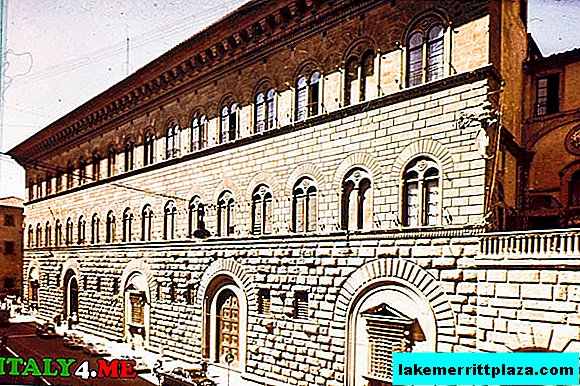
On the upper edge of the building, the architect decided to launch a strongly protruding cornice with consoles. Similar elements have not been used in architecture since antiquity. The second floor is divided with the first cornice with a serrated frieze, and is also decorated with the coat of arms of the Medici family.
Coat of arms of Medici
The exact meaning of the Medici coat of arms does not exist. However, in one of the historical manuscripts a legend was found telling about the connection of the Medici family and Charlemagne. Someone from the Medici named Averardo commanded the army of Charlemagne. Once during the liberation of Tuscany from the Lombards, he met in hand-to-hand combat with the giant Mugelo. The giant wielded a huge club with iron balls, and Averardo had only to defend himself with a shield. These traces on the Medici shield from blows and became the emblem of the family. And the first Medici land was located in an area called Mugelo.
Alternative versions of the origin of the coat of arms with 6 balls say that balls indicate pills (the ancestors of the Medici were doctors) or gold bars (a symbol of wealth) - in the Middle Ages they had a spherical shape.

The first floor was divided into a stable, a kitchen, and service housing. The second was occupied by the chambers of the owners and various representative premises were located. After all, according to the initial plan, the palazzo was to serve not only as the family home, but to become the headquarters of the Medici bank. And in those days, Cosimo Medici was considered the most respected of the 80 bankers of Florence.
Interior decoration
Some of the premises on the ground floor have been preserved in almost the same form as they were in the 17th century. One of such rooms is the Gallery of Mirrors (Giordano Gallery, Giordano Galleria). The vault of the room is decorated with frescoes created by the Neapolitan artist Luca Giordano in the late 17th century, commissioned by the Riccardi family. Allegorical figures are depicted on the frescoes.
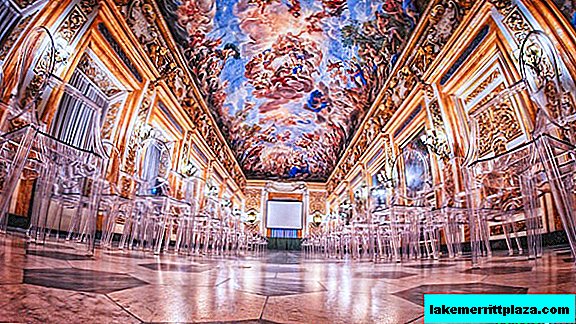
In the central part of the arch is the "Triumph of the Medici on the Clouds of Olympus". In the center of the composition is Jupiter on top of Olympus. He is surrounded by characters with easily recognizable faces of the Medici family. The main character, at whose feet a lion sits, is the Grand Duke of Tuscany Cosimo III Medici. On the sides of him riding his white horses are his sons: Ferdinando Medici on his right and Gian Gastone on his left. The brother of the duke, Francesco Maria Medici, is shown a little lower. Above you can see characters with stars burning above their heads. The stars symbolize the moons of the planet Jupiter, which were discovered by Galileo and dedicated to the Medici family (lat. Stellae Medicae).

Leaving the Giordano Gallery, you will see the "Madonna and Child" by Filippo Lippi. The Florentine artist was patronized by the Medici family, and orders from them came to him throughout his life. It is worth paying tribute to the talent of the artist, because the embodiment of maternal tenderness can not leave anyone indifferent.
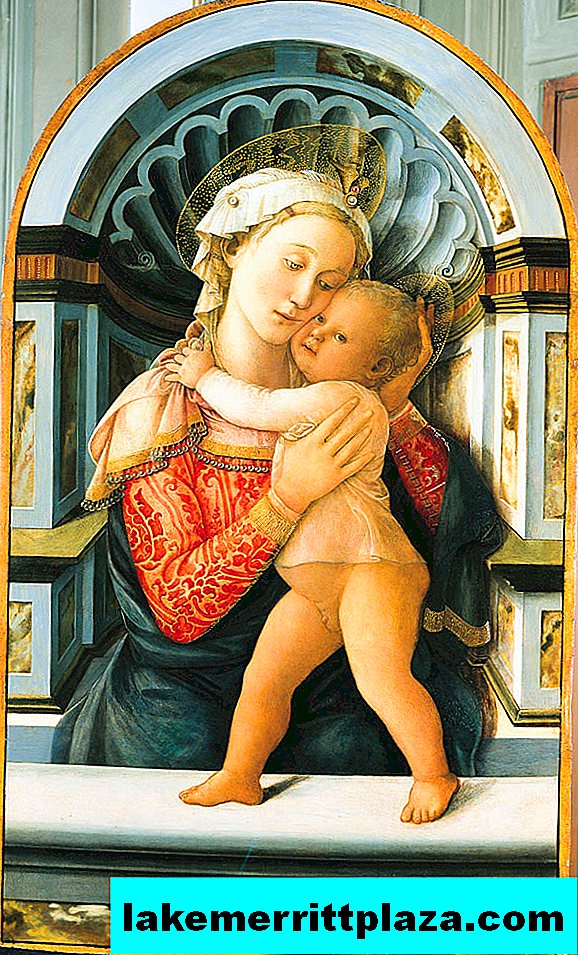
When in 1494 Italy was occupied by the troops of the French king Charles VIII, the province of Florence was under the leadership of Pietro Gino Caponi. The Italians stubbornly did not want to surrender to the French. Before the threat of attack, Kapponi said: "If you start to blow the pipes, we will ring the bells." This event took place in the hall, later called the "Carl's Hall", and the phrase went down in history.
Having risen to the second floor, do not hope to find there any of Medici's personal belongings. After all, starting from the 17th century, the premises were repeatedly rebuilt and modified. To some, the interior rooms may seem huge. But here it is worth remembering that the building was designed for a large Italian family. And this is not less than six to seven sons with wives, as well as numerous children, animals and servants.
Unlike the first, the second floor was considered the front. Its walls are covered with marble, a gilded ceiling above its head, decorated with stucco decorations, the floor is tiled with marble, relief frames are made on the windows and doors, the furniture is inlaid with colorful wooden mosaics.
The Chapel of the Magi
One of the most famous places in the palace was a small family chapel, called the Chapel of the Magi. A small room consists of two rooms. Once inside, you are breathtaking. There is a feeling that you are in a fabulous box. The walls are painted, but not in a cycle of frescoes, but rather in a continuous unified decoration. The decoration was done by Benozzo Gozzoli (Italian: Benozzo Gozzoli, 1420-1497). It was he who created the famous "Procession of the Magi in Bethlehem." And having looked closely, one can easily notice that the faces of the Magi strongly resemble the faces of the Medici family.

The procession of the Magi slowly moves. Some old men and youths look at you from the walls, others go about their business and absolutely do not pay any attention to you. It seems that the sound of hooves is heard, quietly breaking the silence. The smell of laurel is felt. Being inside, you briefly fall out of reality. The faces of the people depicted seem both close and distant. There is a feeling of an ordinary Florentine street. Only the clothes are a little different.
The walls are completely encircled by an endlessly crowded procession led by three magi. Each of them has its own motorcade. The star of Bethlehem, showing them the way, shines directly from the ceiling.
The central place of the chapel is the altar. From the beginning of the 20th century, the altar painting “Christmas” was placed over it, on which Mary worships the baby together with John the Baptist. The image is a copy of Filippo Lippi's work by his student. The original can be seen in the gallery Berlin-Dahlem.
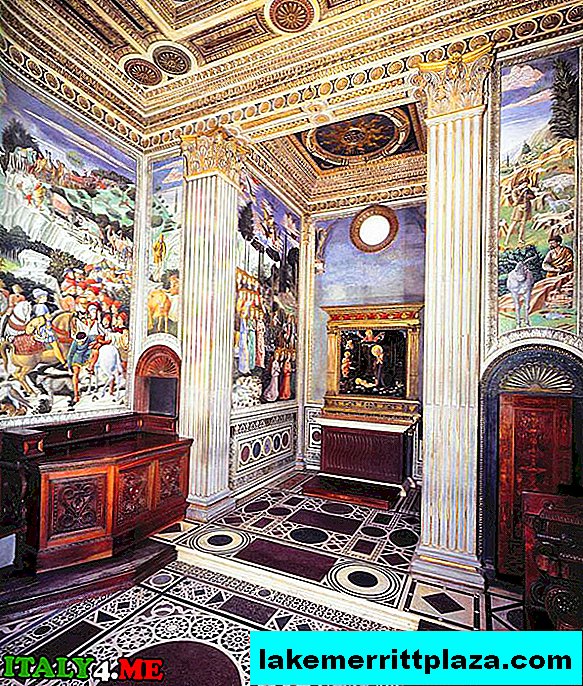
All senior representatives of the Medici family for several centuries lived in this massive building. Until one day during the reign of Pietro Medici "Loser" they did not have to leave their house, fleeing the angry crowd. Everything that was possible, they tried to take away with them. However, most of the treasures were looted. In 1659, after a period of some decline, the Medici sold the palazzo to the Riccardi family.
In addition to the palace of the Marquis, Gabriello Riccardi became the owner of three nearby buildings, which also belonged to the Medici. Immediately after the purchase, reconstruction began. The palace was expanded on the north side and the interior decoration was partially updated. During the restructuring, Riccardi tried to maintain a Renaissance-style appearance. From the inside, the interior was revised towards Baroque, which was just beginning to become fashionable. The addition of a new style made the building more magnificent and spectacular.
In 1814, Riccardi decided to sell the building to the Grand Duke of Tuscany. Since then, the palace received the name of both former owners of the Medici Riccardi. In 1874, the mansion was sold to the Province of Florence, which placed the Prefecture of the city on its premises.
Today, some of the premises of the palace are also occupied by the Riccardian Library. It was founded by Ricardo Riccardi in 1600. And since 1715, the library was opened to the public. Part of the unoccupied premises is retained in its original form and is open for visitors to see.
Useful information
- Palace Address: Via Cavour, 3 (Cavour Street near the Cathedral of Santa Maria del Fiore)
- Official website: www.palazzo-medici.it
Working hours
The palace is open for visitors daily from 9-00 to 19-00, except Wednesday. On weekends and holidays, the palazzo closes at 18-00.
IMPORTANT: the ticket office is open from 9-00 to 17-00.
Ticket price
The entrance ticket will cost you 7 euros, for the preferential category (adolescents and military personnel) - 4 euros. People with disabilities can visit the Palazzo Medici Riccardi for free with an accompanying person.
IMPORTANT: entrance to the chapel is limited by the number of visitors. No more than 10 people at a time.
How to get there
If you get by public transport, then buses number 1,6,11,17 will suit you. If you decide to use your own transport, then you can park your car at the Central Market or train station located nearby.
Florence is a Tuscan city standing on the Arno River. It contains a huge number of different attractions, most of which are palaces, cathedrals and museums. The city became the cradle of Leonardo da Vinci, Dante Alighieri, Boccaccio and many other famous personalities. It is believed that Florence became the birthplace of the Renaissance in Italy.

